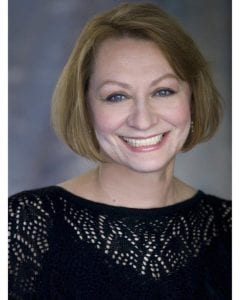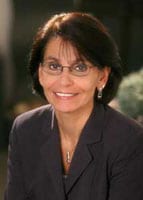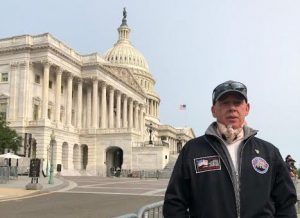By Lisa Scott
The League of Women Voters encourages informed and active participation in government and thus prioritizes voter registration and getting out the vote.
The 2020 elections had a record shattering turnout — 158,254,139 ballots were cast for President from 66.7% of eligible voters. Does this mean that we have achieved our goals or can look forward to even greater election participation and thus more representative government in the coming years? The answer is definitely no! Here’s why …
Many Americans believe that voting rights and laws are derived from the Constitution and federal law. That’s only partially true and mostly just for federal elections. Voters’ lives are much more affected by state election law, which as was seen in the 2020 election results. Add our (decennial) census and the absolute power (in most states) of the state legislature to “reapportion” Congressional and other district lines. You now have a recipe for institutional power monopolies; reducing the ability for voters to actually select their representatives (the elected officials choose their voters = gerrymandering) in free and fair elections. Many state legislatures have already introduced hundreds of new voter suppression laws aimed at decreasing voter turnout.
As residents of New York State, many of us were shocked to learn that our state voting laws and constitution are an anachronistic embarrassment. Other states had pioneered and proved the value and reliability and security of 100% mail-in voting, many days of early voting and no-excuse absentee ballots. In 2019 New Yorkers had our first early voting opportunities in a local election year with sparse turnout.
Only a few months later, COVID lockdowns and quarantines changed everything. Governor Cuomo issued a state of emergency allowing him to issue many executive orders, some of which liberalized our election laws and processes. However, these need to be enacted as state law in order to be made permanent.
The Senate met in January to pass a package of absentee voting reforms and two constitutional amendments related to voting:
Speeding Up the Absentee Ballot Counting Process: This bill, S.1027, sponsored by Deputy Majority Leader Senator Michael Gianaris, amends various provisions of the Election Law in order to allow for expedited review and canvassing of absentee ballots without compromising the integrity of elections.
Preventing Disenfranchisement of Absentee Voters: This bill, S.253, sponsored by Senate Elections Committee Chair, Senator Zellnor Myrie, prohibits voiding absentee ballots on technicalities where intent of voters is clear and the law has been substantially complied with, including where there are stray marks or the ballot is undated but is time stamped by the Board of Elections.
Permanently Authorizing Absentee Ballot Drop Boxes: This bill, S.492, sponsored by Senator Brad Hoylman, authorizes the Board of Elections to establish absentee ballot drop-off locations or drop-boxes to provide voters with a convenient and secure option for delivering their absentee ballots.
Increasing Transparency and Information about Absentee Ballots through a Tracking System: This bill, S.1028, sponsored by Senator Leroy Comrie, ensures that all voters in the state have access to absentee ballot tracking by requiring the New York State Board of Elections to create a statewide absentee ballot tracking system for absentee voters to ensure that their vote is counted in the election while allowing counties and the New York City Board of Elections to also maintain their own absentee tracking systems.
Implementing Permanent Authorization for Applying for Absentee Ballots Online: This bill, S.632, sponsored by Senator Robert Jackson, permanently allows voters to apply for absentee ballots online and allows absentee ballots postmarked through Election Day by making permanent Chapter 91 of the Laws of 2020, which sunset on December 31, 2020. Under current Election Law, applications may only be made by mail or fax.
Creating Accountability for Timely Receipt of Absentee Ballots: This bill, S.516, sponsored by Deputy Majority Leader Michael Gianaris, establishes mandatory timeframes for processing of absentee ballot applications and ballots by Boards of Elections based on when the application was received.
Enabling Earlier Applications for Absentee Ballots: This bill, S.631, sponsored by Senator Julia Salazar, permits Boards of Elections to receive absentee ballot applications earlier than thirty days before the applicable Election Day by making permanent Chapter 138 of the Laws of 2020, which sunset on December 31, 2020.
Ensuring Voters Timely Receipt of Absentee Ballots: This bill, S.264, sponsored by Senator Zellnor Myrie, sets deadline for absentee ballot applications sent by mail to 15 days before the election, up from 7 days, to better allow for voters timely receiving their absentee ballots.
No-Excuse Absentee Voting Constitutional Amendment: This legislation, S.360, sponsored by Senator Leroy Comrie, amends the State Constitution to allow for any voter to vote by absentee without an excuse.*
Same-day Voter Registration Constitutional Amendment: This legislation, S.517, sponsored by Deputy Majority Leader Michael Gianaris, removes 10 day deadline to submit registration.*
*Both constitutional amendments were passed by the Senate and Assembly in the last session but are also required to be passed by both houses during this session. If they are passed again they will be placed on the ballot in November as voter referendums.
At this time we are unsure when the Assembly will be taking up these reforms. In the last three legislative sessions, the Senate has made election reform one of their early priority issues. The Assembly typically does not take up these bills until after the state budget has passed. (Note: Gov. Cuomo submitted the budget in late January, the 2021 fiscal year starts April 1.)
Lisa Scott is president of the League of Women Voters of Suffolk County, a nonprofit, nonpartisan organization that encourages the informed and active participation of citizens in government and influences public policy through education and advocacy. For more information, visit www.lwv-suffolkcounty.org or call 631-862-6860.




















